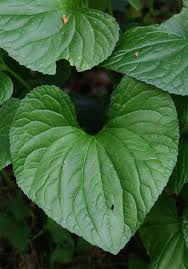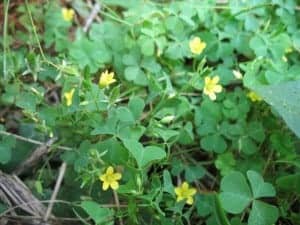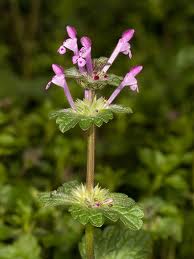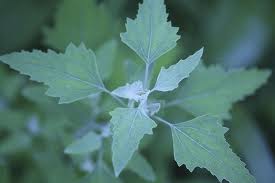Raising Healthy Children, Part 3
Our last post was on cultivating your child’s inner foodie: here is one of the BEST ways I know to get them to eat their greens: Make a Wild Salad! You get to go outdoors, eat good food, identify plants, “cook” together, experience new flavors – all in one salad bowl!
All you need is whatever you would normally put in a salad – tomato, cucumber, avocado, and pecans are some of my favorites. Hard boiled eggs are good, or bits of real bacon are also great! You can have some lettuce on hand in case you don’t gather enough wild leaves, or if you want something familiar to blend in with the new flavors.
So now, along with your salad fixin’s, you just add wild plants!
Wait, Katja, we’re going to …what? I have done this with kids from every walk of life, and let me tell you – I’ve never seen kids gobble up their veggies faster than when they went out and picked them straight out of the ground. And you don’t have to live in the wilderness for this to work: pack up the family, and head someplace like Rock Meadow in Belmont, or the Arnold Arboretum. Although it’s not permitted to harvest flowers or fruits in these places, the bowl-full of leaves you’ll need for your salad isn’t going to bother anyone.
Here is a list, with photographs, so that you can go out and collect with confidence. You can find these plants in your yard, around woodsy edges of a playground, or any other public park/nature trail that hasn’t been sprayed with pesticides/herbicides. Please keep in mind (and teach your children) three important rules about collecting wild food:
- Always ask permission before you pick a plant, just like we ask permission before we play with our friend’s toys. Asking permission shows respect for the plant, and reminds us that we do not “own” nature: we live together here. When the plant says you may, don’t forget to say thank you! Remember that this plant is alive, and when you pick the leaf, the plant is sharing its life with you.
- Only take a small amount from any given area. You need to leave enough plants there to grow and go to seed so that more will grow next year, and you need to leave enough leftover for the animals to eat. Perhaps you agree that you will only take one leaf off of any given plant, or one flower for every five flowers that you see. This will help keep your harvest sustainable!
- Never take the strongest, largest plant from a patch. That plant is the grandmother plant, and she is the “backbone” of the whole clump. To keep the whole patch healthy, take only a small amount, and allow the strongest plant to remain untouched.
Dandelion
Slightly bitter, but delicious, and abundant! Dandelion provides many minerals, improves digestion, and aids in kidney function.
Possible look-alikes are Chicory or Wild Lettuce, both edible. Chicory is good for your liver, though Wild Lettuce is a bit more bitter than store-bought.
Violet Leaves
Slightly sweet, and extra fun because they’re heart-shaped! Violet is good for a heathy immune system because it helps move your lymph. It’s also soothing to heart and nervous system – just right for our stressful times! (Possible look-alike – Garlic Mustard. Edible, and delicious!)
Sorrel
“Irish Clover” – each of the three leaves is a perfect little heart. Sorrel has yellow flowers and a wonderful sour taste that kids seem to love. If sorrel grows near you, it’s sure to be a favorite!
Henbit or Ground Ivy
These two plants are related, and you may have one or both growing in your area. They’re members of the mint family, and although they don’t taste like peppermint, they are delicious! You can eat the leaves and the flowers, and even the stems if you’d like some crunch! (Possible look-alike – Deadnettle, also a edible mint family plant)
Lamb’s Quarters
Frequently referred to as the single most nutritious plant known! They grow everywhere – even in the desert – and have a pleasant mild taste. This tall-growing plant is often called “Goosefoot” – the leaves look like goose foot prints, and often have a bit of white “dust” on the baby leaves.
Plantain
A little stringy, but very good for you and super nutritious! Not only that, but it’s great for healing cuts, wounds, abrasions, burns, and even bug bites! Internally, it’ll do the same for the “skin” of your digestive tract, so plantain is a good friend to folks with heartburn and IBS.
Toss everything in a bowl and savor the flavors AND the moment . . . your kids are going to remember this forever!!!
Read the rest of the series:
For a complete guide to navigating adolescence and herbs for teens, check out our Supporting Kids Through Puberty course! It includes webinar-style and standard video sessions chock full of strategies to make the years of puberty more peaceful for everyone in the family. By the end of this program, you’ll know dozens of ways to incorporate herbs into your teen’s food, drinks, and self-care routines to keep them (and you!) healthy and resilient as they transition into adulthood.
This article was originally written for mommypotamus.

Join our newsletter for more herby goodness!
Get our newsletter delivered right to your inbox. You'll be first to hear about free mini-courses, podcast episodes, and other goodies about holistic herbalism.






